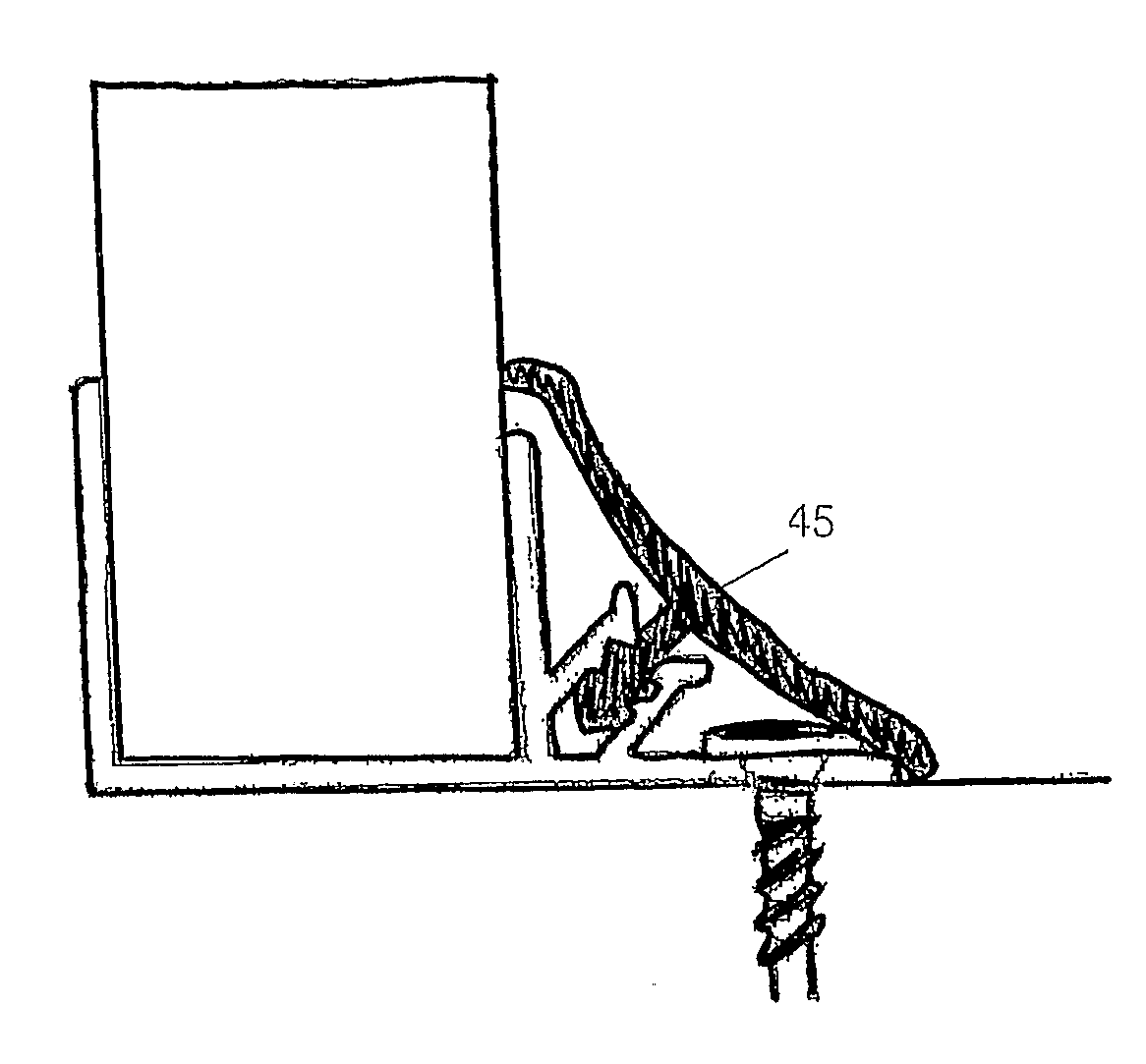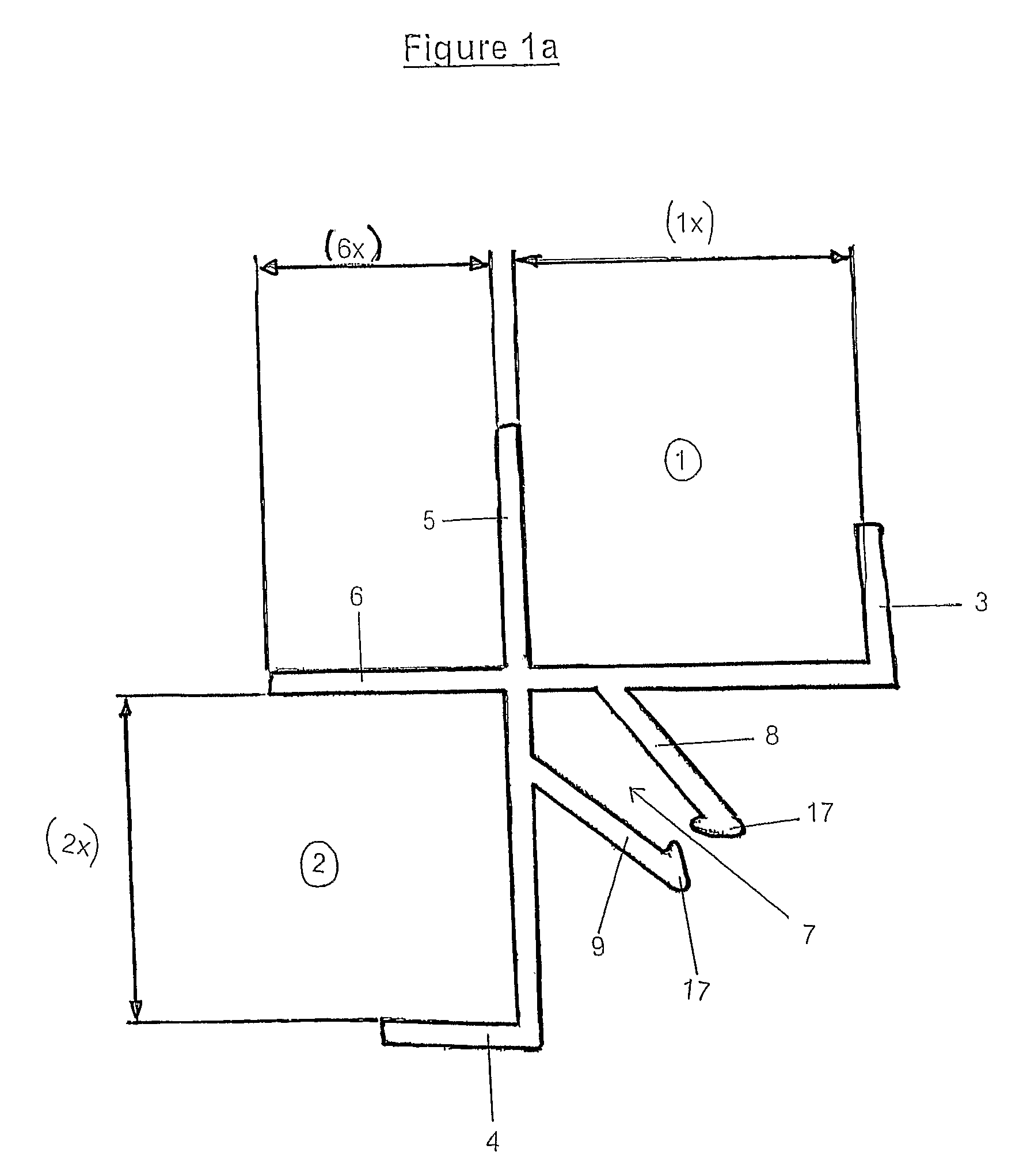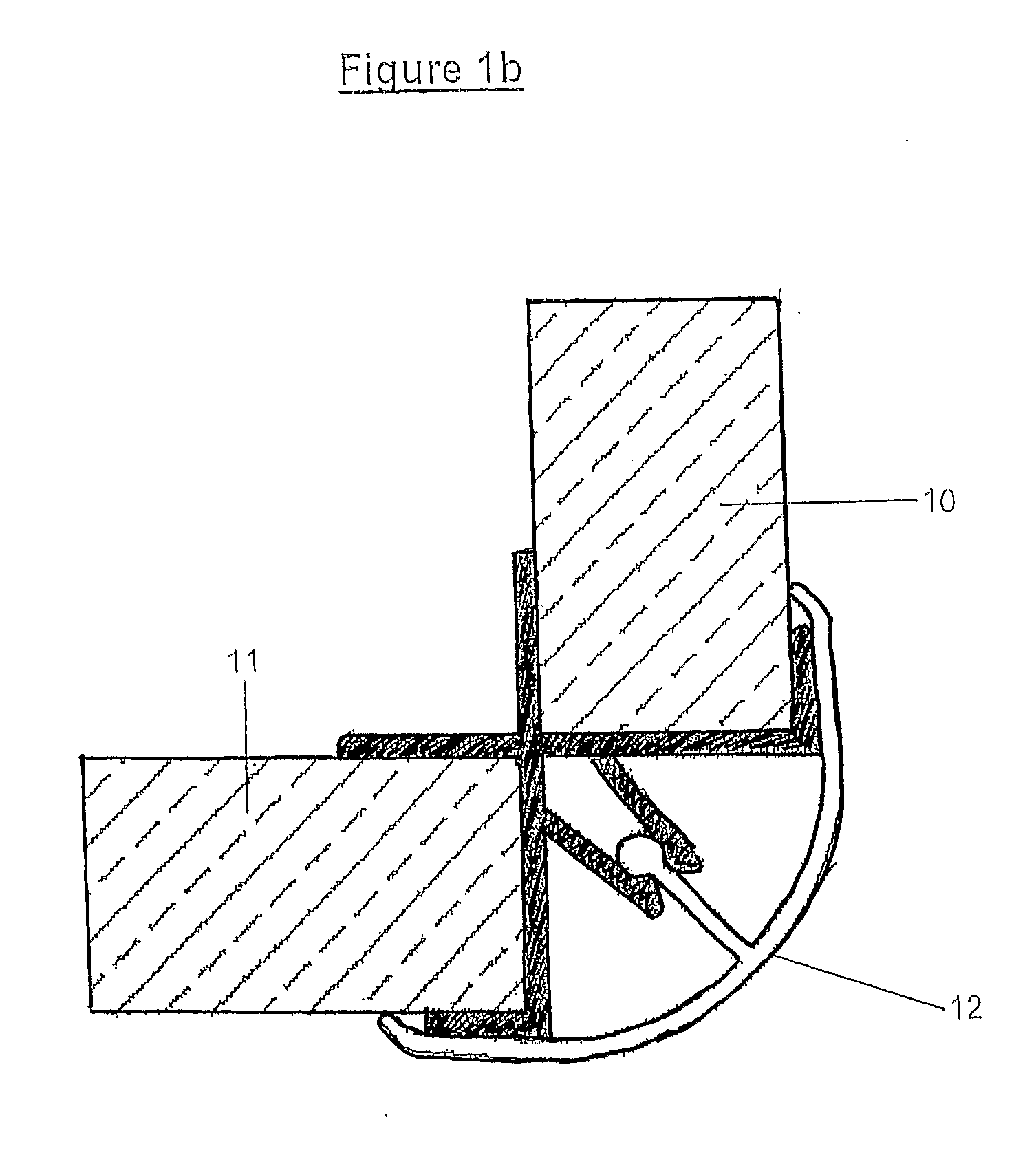Connector for panelling
a technology of connecting rods and panellings, applied in the direction of couplings, building repairs, transportation and packaging, etc., to achieve the effect of easy production of conduits, easy manipulation and cutting, and easy removal
- Summary
- Abstract
- Description
- Claims
- Application Information
AI Technical Summary
Benefits of technology
Problems solved by technology
Method used
Image
Examples
Embodiment Construction
[0122]FIG. 1a shows a schematic of a corner connector which is utilised to connect two soft centred panels, orientated at 90° to one another. The connector incorporates a first channel (1), which is configured to fit the edge of one soft sample panel, and a second channel (2) configured to fit the edge of a second soft centred to panel to be orientated at 90° to the panel which is fitted into channel (1).
[0123]Each of the channels has an outer edge (3, 4 respectively), and an inside edge (5, 6 respectively). The outer edge (3, 4) is shorter than the inner edge so that it is easier to cover same with trim to finish off the exterior of the corners. The inner edges (5, 6) may be longer to provide extra strength and stability to the connection.
[0124]The connector also includes a third channel (generally shown by (7)), which includes two side panels (8, 9), configured to fit a trim panel as shown in FIG. 2.
[0125]The preferred interior width of the channels (1, 2) is 19 mm at the base of ...
PUM
 Login to View More
Login to View More Abstract
Description
Claims
Application Information
 Login to View More
Login to View More - R&D
- Intellectual Property
- Life Sciences
- Materials
- Tech Scout
- Unparalleled Data Quality
- Higher Quality Content
- 60% Fewer Hallucinations
Browse by: Latest US Patents, China's latest patents, Technical Efficacy Thesaurus, Application Domain, Technology Topic, Popular Technical Reports.
© 2025 PatSnap. All rights reserved.Legal|Privacy policy|Modern Slavery Act Transparency Statement|Sitemap|About US| Contact US: help@patsnap.com



